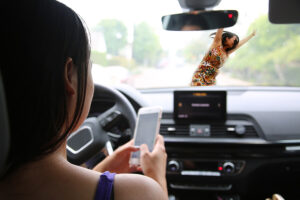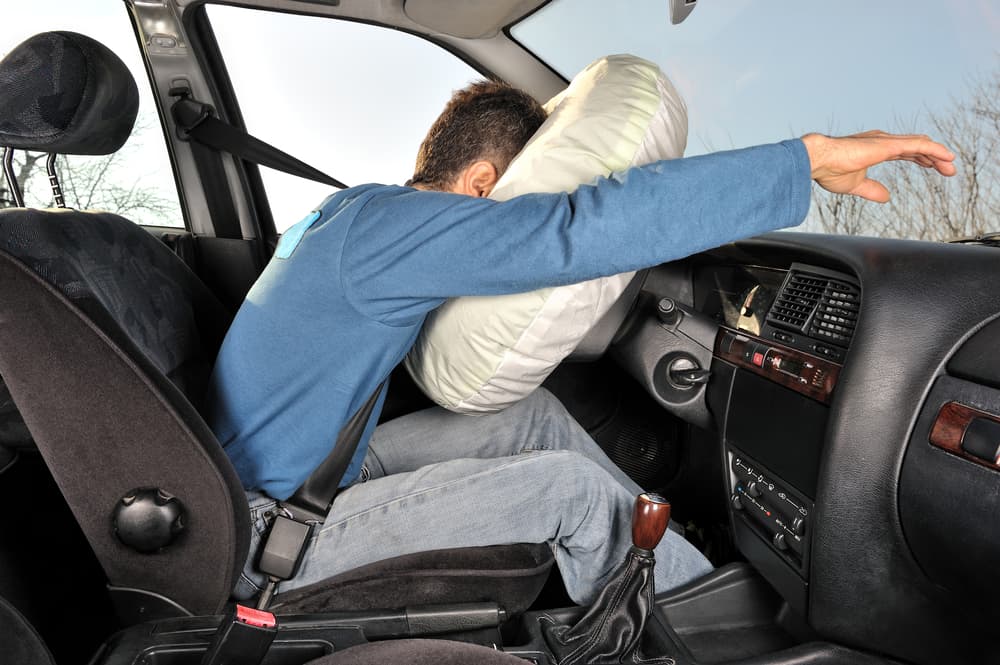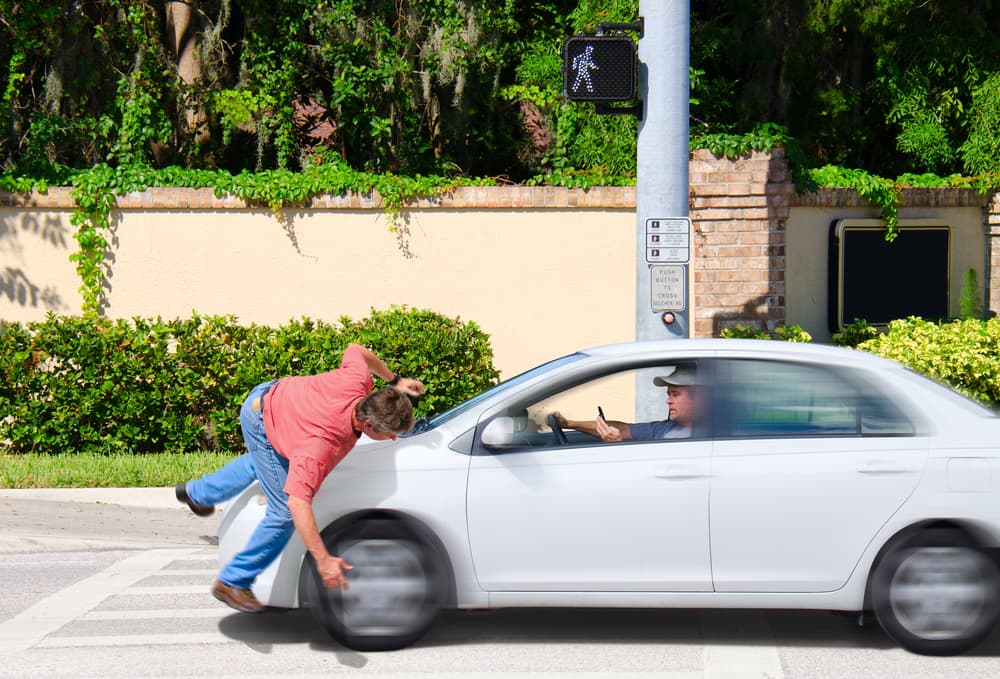Distracted driving is widespread, especially since cell phones and other smart devices hit the market. People often divert their focus to these devices or other things while driving, putting themselves at risk of car accidents. Momentary distractions have always taken attention away while driving, but those drivers who allow distractions to take priority or become a habit endanger everyone.
Sometimes drivers are paying attention to anything other than the road. When they do this, they lose awareness of their surroundings, encouraging accidents with other drivers. If a distracted driver hit you and you suffered injuries, you deserve compensation. Though, what you are due depends on the specific circumstances of the accident.
Continue reading to learn more about distracted driving and how it commonly leads to accidents.
What Is Distracted Driving?
When someone operates a vehicle and diverts their attention from driving to an activity that requires their focus, they are driving distracted. The vehicle is still moving, but the driver is not concentrating on the road. Many different activities can distract someone from driving, but the primary suspects are eating, texting, talking to people, and changing the song on the radio.
When someone drives while distracted, they cannot avoid driving errors as quickly as if they were focused entirely on the road. For example, reading a text can divert your attention for up to 15 seconds. That is plenty of time to lose track of your surroundings and crash into other vehicles, pedestrians, or fixed objects. Rather than taking the risk, drivers should choose to stay entirely focused on the road while operating a vehicle.
Distracted Driving Kills People
According to the Centers for Disease Control and Prevention (CDC), approximately nine people die daily from car crashes involving distracted drivers. One in five persons killed in these crashes was not even in a vehicle—they were pedestrians, cyclists, or outside vehicles for some other reason. In total, 3,100 people died in a recent year, with 424,000 suffering injuries due to distracted driving.
The fact that these accidents involved distracted drivers means that many of them were entirely preventable. People might have lived if the drivers kept their focus on the road. This is an unfortunate truth, but if you have survived a distracted driver accident, be thankful that you did not become a part of these terrifying fatality statistics. You still might have serious injuries to deal with, however.
There Are Different Types of Distracted Driving
There are several ways to divert attention from driving.
The three driving distractions are:
- Visual
- Manual
- Cognitive
If you are curious about what each type of distracted driving entails, here is a breakdown.
Visual Distractions
Visual distractions are actions or stimuli that take your visual focus off the road. Examples include a wreck on the side of the road that you cannot help looking at or a rainbow that draws your attention to the sky. Anything can happen when your eyes are off the road until you return your vision to the road. Someone can cut in front of you, you can miss a traffic signal, or worse yet, you can hit a pedestrian.
Avoiding visual distractions requires self-control. Even if something stimulating is in the immediate area, drivers do not have to look at it. A glance may be okay, but they must immediately return their focus to the road. Not doing so puts drivers at serious risk of harmful accidents.
Manual Distractions
Some people are so confident in their driving ability that they take their hands away from the wheel to tend to other things. An excellent example involves taking your hands off the wheel to pick up a cell phone, respond to a text message, or answer a call. Other examples include picking up a piece of food to snack on or taking a sip from a drink you have nearby.
Anything that takes your hands off the steering wheel can leave you unable to respond actively to hazards. Therefore, it makes the most sense to drive safely by keeping your hands ready at the wheel at all times. Choosing not to do so often leads to preventable accidents.
Cognitive Distractions
A sneaky distraction is a cognitive distraction. These distractions take a driver’s focus away from the road. They often occur in the form of daydreaming, but someone ruminating on their workday can also get intensely distracted from their driving. Frankly, anything form of thinking that takes most of your mind to manage is a hazardous form of distracted driving.
Some cognitive distractions may often go unnoticed by drivers. For instance, it may seem harmless to sing a song that is playing on the radio. Yet, sometimes singing that song can divert your focus more to remembering the lyrics than paying attention to the road. Likewise, a conversation with someone in the passenger seat may take priority in your mind, eliminating a certain amount of your ability to respond to events on the road.
The Worst Case Scenario
Each form of driving distraction is dangerous on its own, but when you engage in multiple distractions simultaneously, the risk level goes through the roof. Some distractions are so immense that they cause you to remove your hands from the wheel, take your eyes off the road, and think about things irrelevant to operating your vehicle.
A great example is dropping an item on the floor of your vehicle. You pick the item up, which requires you to lean over and take a hand off the wheel. Now neither your eyes nor your hands are tending to your driving responsibilities. If the item you dropped was essential, you might question whether it sustained damage. Worse yet, if you cannot retrieve it immediately, you may get frustrated with the entire situation and forget that you are even driving for a minute.
In modern times, texting or reading content on a smartphone is a common example of all three distractions combined. When a driver reads or sends a text, they need their hands to hold and navigate their phone, their eyes to watch the phone screen, and their mind to comprehend or compose the message. This made texting one of the biggest threats on our roads, leading to many accidents every year.
Even good drivers make momentary mistakes like this, but the consequences can be dire. If you feel like the driver that hit you was preoccupied to this extent, you deserve to recover compensation because they were driving while distracted. A car accident lawyer can evaluate your claim and help you determine how much compensation you deserve and the best way to seek it. Proving distractions like texting is not simple, but the right car accident attorney will have the tools and experience to do so.
Need a Lawyer?
Reach out to the Lucas, Macyszyn, and Dyer Law Firm, Accident Injury Attorneys team to begin your consultation. We pride ourselves on providing exceptional case results and giving you the peace of mind you deserve.
Examples of Driving Distractions
Now that you know what distracted driving is and its forms, you should better understand what distracted driving looks like in practice. Some common examples of distracted driving behaviors may lead to an accident.
A wandering mind
In the United States, data shows that the most common cause of distracted driving fatalities was a driver’s mind drifting toward thoughts irrelevant to driving their vehicles. This form of distraction accounts for as many as 62 percent of driving fatalities in recent years. The report also stated that driving for a long time without breaks can cause fatigue, which makes it more likely that one’s mind will wander. A wandering mind can also combine with other types of distractions to become even more dangerous.
Smartphone usage
Smartphones became ubiquitous in our society, and as a result, motor vehicle death rates began to skyrocket. This rise is because smartphone use is one of the most common culprits of car crashes. The National Safety Council estimated that the use of smartphones accounts for up to 27 percent of all auto accidents. Furthermore, some research has revealed that even hands-free smartphone use can still impair one’s driving ability. This finding makes sense because engaging in a phone conversation may serve as a cognitive distraction.
Passengers
Having another person in your vehicle can put a demand on your attention. If you have passengers, set boundaries so they know you must focus on driving. With young drivers, this is even more important. Because young drivers are likely to have minimal driving experience, they require more focus to drive safely.
You may not have considered your passengers a risk factor, but think about it – if you spend most of your attention speaking to people in the car with you, you won’t focus on the road. To ensure that this does not become a problem when you have people in the car with you, always tell them that their safety depends on them not becoming too distracted while driving.
External stimuli
Sometimes drivers encounter interesting scenes. While it may feel okay to focus on them, the best thing to do is ignore them and keep moving. Some examples include billboards, people outside your vehicle, and other drivers or their vehicles. These external distractions are hard to ignore because they may genuinely engage a driver’s attention. Unfortunately, resistance is the only way to entirely avoid distracted driving accidents caused by external stimuli.
Consumption
Many drivers feel it is okay to eat and drink while driving. Yet, doing so can easily cause an accident. If you are holding food or a drink, you can’t be attending to the steering wheel properly. When someone changes lanes in front of you or an obstacle enter your path, you will have far less capacity to avoid a collision. Therefore, if you need to eat, get to your destination first or pull over somewhere safe.
Controlling devices
Have you ever been obsessively switching through songs on shuffle to find one that fits your current mood? Well, you are not alone. Many accidents happen because people focus on the devices in their vehicles, including radios, air conditioning controls, and GPS. Unfortunately, if you focus on these devices, you may miss an important cue that leaves you involved in an accident.
Instead of making adjustments while your vehicle moves, wait until you stop. This way, you avoid the risk of hitting something while you are not paying attention to your surroundings.
Bugs and animals
Everybody hates bugs. One buzzing around your vehicle can be a significant distraction that sometimes leads to accidents. Maybe you struggle to bat a fly that keeps landing on your face. It may seem like your top priority at the time, but the reality is that you need to pay attention to the road. The fly will eventually make its way out of the car, but if you are in an accident, you will be liable for the damages, not the fly.
Similarly, your dog cannot take priority over focusing on the road. Even if your dog is in the backseat barking, you should never look back for too long to see what is wrong. Find a place to pull over, then tend to your animal safely.
Hit By a Distracted Driver? Take Action!

Distracted driving causes many accidents every year. People who have suffered an injury in these accidents deserve compensation for their losses. Yet, it is not always easy to prove that another driver was distracted during an accident. You need a car accident lawyer to represent you in your claim. They will gather evidence on your behalf to help you win your claim.
Get in touch with the right law firm for a free case evaluation today.



